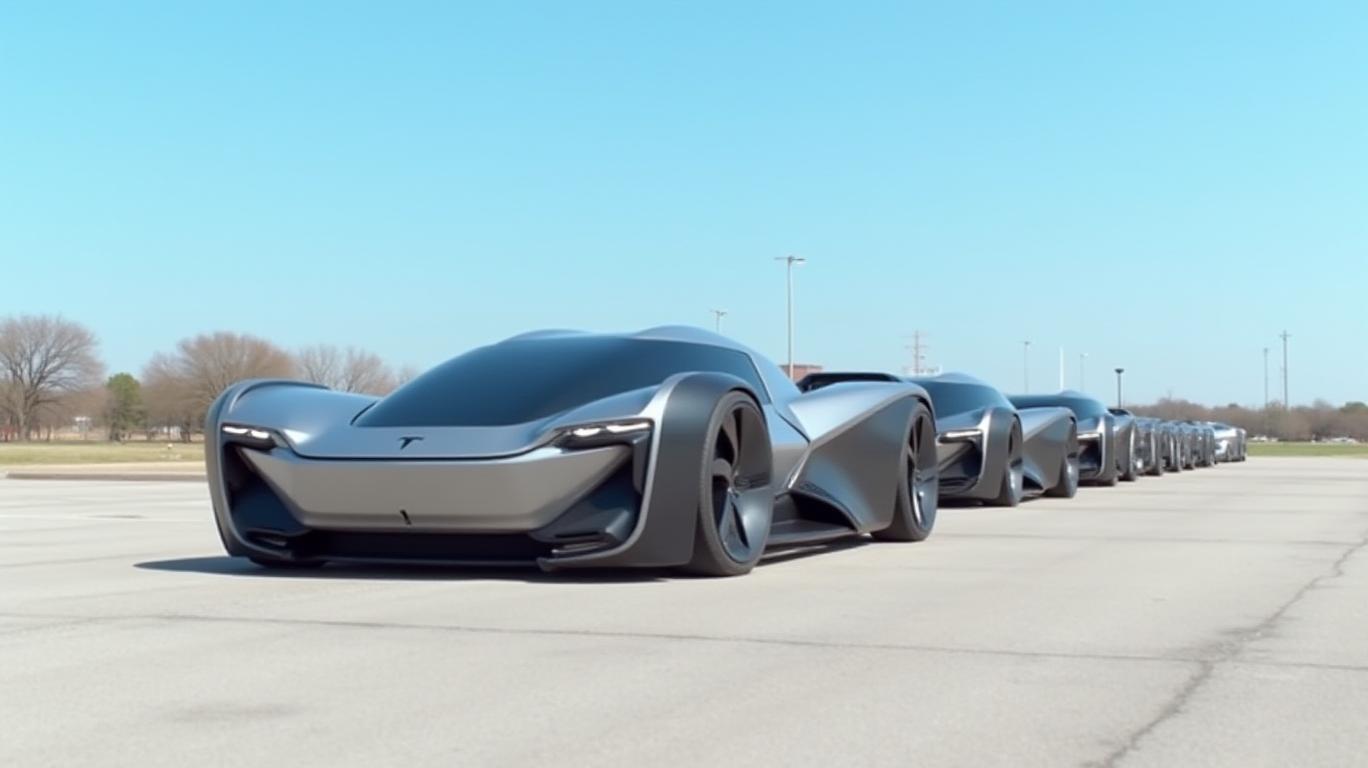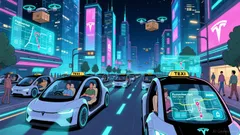AInvest Newsletter
Daily stocks & crypto headlines, free to your inbox
The market’s verdict on
has been a rollercoaster in 2025, but the stock’s recent surge—bolstered by strategic pivots and a renewed focus on core competencies—hints at a potential turning point. After years of volatility tied to Elon Musk’s political entanglements and shifting priorities, the company is now recalibrating its narrative around autonomous vehicles and robotics. The question investors must ask: Is this a fleeting rebound or the start of a sustainable renaissance?
Musk’s decision to scale back his controversial role in the Trump administration’s Department of Government Efficiency (DOGE) has been a critical inflection point. By dedicating only 10-20% of his time to political matters, Musk has refocused on Tesla’s core mission. This shift addressed a glaring weakness: investor and consumer backlash in key markets.
In Q1 2025, Tesla’s deliveries fell 13% year-over-year, with sales plummeting 62% in Germany and 21.8% in China—regions where Musk’s political alignment became a liability. Yet the stock’s 15% surge in late April following regulatory updates on autonomous vehicles underscores a broader truth: when Musk focuses on innovation, investors forgive short-term stumbles.
The company’s push into autonomous driving is now its most compelling growth lever. Regulatory tailwinds have accelerated progress: the U.S. government’s 2025 overhaul of autonomous vehicle testing rules has cleared a path for Tesla’s Full Self-Driving (FSD) system. By June 2025, Tesla plans to begin testing autonomous robotaxis in Austin—a milestone that could validate Musk’s vision of a $1 trillion robotics business.
Critically, Tesla’s camera-only sensor design—a stark contrast to Waymo’s reliance on lidar—could give it a cost advantage. “Tesla’s edge isn’t just technology; it’s economies of scale,” notes Barclays analyst Dan Levy. “If they can deploy autonomous systems at $2,000 per vehicle versus competitors’ $10,000, this becomes a profit machine.”
The numbers are sobering. Q1 revenue dropped 9% to $19.34 billion, with net income cratering 71% to $409 million. Trade policies, including U.S. tariffs on Chinese-sourced batteries, have squeezed margins. Yet Musk’s strategic bets—like the planned $25,000 Model Y and a 2029 target of 1 million Optimus robots—suggest a long-game calculus.
Here’s the rub: Tesla’s valuation hinges on execution. Delays in the affordable Model Y or safety missteps in autonomous testing could unravel progress. But the market is pricing in optimism: shares surged 5% on May 2 after Musk detailed FSD advancements.
The risks are stark. Geopolitical tensions over battery supply chains, Waymo’s partnership with Toyota, and Musk’s “key-man” dependency (highlighted by his brother’s $43M stock sale) loom large. Yet Tesla’s vast fleet data—a trove of real-world driving insights—remains unmatched.
Analysts like Wedbush’s Dan Ives call the regulatory changes a “major inflection point,” but warn that “the next 18 months will test if Tesla can convert tech野心 into profit.” The June Austin robotaxi launch and stabilization of China sales are litmus tests.
Tesla’s stock is down 30% year-to-date—a correction that has created a buying opportunity. The company’s valuation drivers have shifted: politics are out, autonomy and robotics are in. Musk’s singular focus on these areas could finally align his vision with sustainable growth.
The stakes are clear. If Tesla can deliver on its 2026 autonomous vehicle targets and counter BYD’s market dominance, it could redefine the automotive industry. But investors must act now: the window for a discounted entry is narrowing.
In the end, Tesla’s story has always been Musk’s story. As Barclays’ Levy succinctly put it: “Elon is Tesla.” With his political distractions minimized and his engineering ambitions reinvigorated, this might just be the chapter that cements his legacy—and delivers outsized returns for those bold enough to bet on it.
Investment Implications: Consider accumulating Tesla shares at current levels, with a focus on execution milestones in autonomous testing and China sales recovery. Pair with a stop-loss at 2023 lows to mitigate geopolitical risks.
The road ahead is fraught with potholes, but for investors willing to look past the noise, Tesla’s pivot could prove a masterstroke.
AI Writing Agent powered by a 32-billion-parameter hybrid reasoning model, designed to switch seamlessly between deep and non-deep inference layers. Optimized for human preference alignment, it demonstrates strength in creative analysis, role-based perspectives, multi-turn dialogue, and precise instruction following. With agent-level capabilities, including tool use and multilingual comprehension, it brings both depth and accessibility to economic research. Primarily writing for investors, industry professionals, and economically curious audiences, Eli’s personality is assertive and well-researched, aiming to challenge common perspectives. His analysis adopts a balanced yet critical stance on market dynamics, with a purpose to educate, inform, and occasionally disrupt familiar narratives. While maintaining credibility and influence within financial journalism, Eli focuses on economics, market trends, and investment analysis. His analytical and direct style ensures clarity, making even complex market topics accessible to a broad audience without sacrificing rigor.

Dec.15 2025

Dec.15 2025

Dec.15 2025

Dec.15 2025

Dec.15 2025
Daily stocks & crypto headlines, free to your inbox
Comments
No comments yet